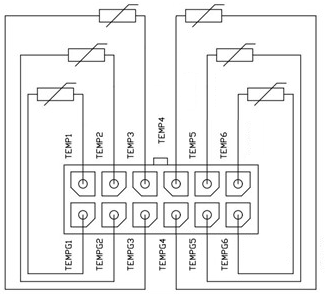2. Установка и подключение
Установка и подключение
Правила безопасности
Для выполнения функций защиты система BMS должна иметь возможность отключить батарею от нагрузки и/или зарядного устройства. Для этого к BMS требуется подключить как минимум один контактор, способный разрывать цепи нагрузки и заряда.
Перед началом работы выполните настройку системы. Правильная работа системы BMS возможна только при корректной настройке.
Не рекомендуется использовать систему в батареях, образованными несколькими параллельно включенными группами последовательно соединенных ячеек. Для целей увеличения ёмкости рекомендуется соединять несколько ячеек параллельно, а затем полученные группы соединять последовательно.
Установка
Место крепления устройства должно быть защищено от попадания механических объектов (пыли, грязи, крупных объектов) и воды. BMS Mini рекомендуется располагать вблизи ячеек, которые контролирует устройство, но вдали от цепей высокого тока для уменьшения воздействия электромагнитных помех на измерительные цепи.
Место крепления должно предполагать удобный доступ к устройству для подключения других элементов батарейной системы: датчика тока, контакторов, панелей индикации.
Устройство BMS Mini имеет радиатор для рассеивания тепла, выделяющегося при балансировке ячеек. При использовании в закрытых корпусах необходимо обеспечить съем тепла с радиатора, в противном случае это может привести к повреждению устройства.
Габаритные и установочные размеры BMS Mini приведены ниже.


| Параметр | Значение |
| Габаритные размеры (длина × ширина × высота), мм | 139.5 × 117 × 17 |
| Установочные размеры (длина × ширина), мм | 130 × 111 |
| Установочные отверстия | M3 |
Разъёмы
Расположение и обозначение разъемов на устройстве BMS Mini показано на рисунке ниже.

X1 – разъём для подключения контакторов
Ответный разъем: Molex 430251800. Контакты: Molex 43030

| Контакт | Название | Назначение |
| 1 | - | - |
| 2 | +12V | Напряжение источника питания 12В |
| 3 | GND | Земля |
| 4 | +12V | Напряжение источника питания 12В |
| 5 | GND | Земля |
| 6 | +12V | Напряжение источника питания 12В |
| 7 | GND | Земля |
| 8 | +12V | Напряжение источника питания 12В |
| 9 | GND | Земля |
| 10 | - | - |
| 11 | FB1 | Сигнал обратной связи контактора 1 |
| 12 | OUT1 | Выход на контактор 1 (ключ нижнего уровня), 100В, не более 5А |
| 13 | FB2 | Сигнал обратной связи контактора 2 |
| 14 | OUT2 | Выход на контактор 2 (ключ нижнего уровня), 100В, не более 5А |
| 15 | FB3 | Сигнал обратной связи контактора 3 |
| 16 | OUT3 | Выход на контактор 3 (ключ нижнего уровня), 100В, не более 5А |
| 17 | FB4 | Сигнал обратной связи контактора 4 |
| 18 | OUT4 | Выход на контактор 4 (ключ нижнего уровня), 100В, не более 5А |
X2 - разъём mini-USB
Разъем mini-USB оспользуется для настройки BMS через ElectricDeviceMonitor.
Х3 – разъём для подключения дискретных входов и выходов
Ответный разъем: Molex 430251600. Контакты: Molex 43030

| Контакт | Название | Назначение |
| 1 | DIN1 | Дискретный вход 1 типа «сухой контакт» (сигнальный) |
| 2 | DIN2 | Дискретный вход 2 типа «сухой контакт» (сигнальный) |
| 3 | DIN3 | Дискретный вход 3 типа «сухой контакт» (сигнальный) |
| 4 | DIN4 | Дискретный вход 4 типа «сухой контакт» (сигнальный) |
| 5 | DOUT1 | Дискретный выход 1 (+5 В, 20 мА) |
| 6 | DOUT2 | Дискретный выход 2 (+5 В, 20 мА) |
| 7 | DOUT3 | Дискретный выход 3 (+5 В, 20 мА) |
| 8 | DOUT4 | Дискретный выход 4 (+5 В, 20 мА) |
| 9 | GND | Дискретный вход 1 типа «сухой контакт» (земля) |
| 10 | GND | Дискретный вход 2 типа «сухой контакт» (земля) |
| 11 | GND | Дискретный вход 3 типа «сухой контакт» (земля) |
| 12 | GND | Дискретный вход 4 типа «сухой контакт» (земля) |
| 13 | GND | Дискретный выход 1 (земля) |
| 14 | GND | Дискретный выход 2 (земля) |
| 15 | GND | Дискретный выход 3 (земля) |
| 16 | GND | Дискретный выход 4 (земля) |
Х4 – разъём внешних изолированных интерфейсов САN и RS485
Ответный разъем: Molex 430250600. Контакты: Molex 43030

| Контакт | Название | Назначение |
| 1 | RS485_B | RS-485 линия B для связи с внешним оборудованием |
| 2 | +5V | Изолированное питание внешних устройств +5В, не более 400 мА |
| 3 | CAN_L | CAN линия L для связи с внешним оборудованием |
| 4 | RS485_A | RS-485 линия A для связи с внешним оборудованием |
| 5 | GND | Изолированная земля |
| 6 | CAN_H | CAN линия H для связи с внешним оборудованием |
Х5 – разъём для кнопки включения устройства
Ответный разъем: Molex 430250200. Контакты: Molex 43030
![]()
| Контакт | Название | Назначение |
| 1 | BTN | Сигнал включения BMS (вход типа «сухой контакт», +3,3В) |
| 2 | GND | Сигнал включения BMS (вход типа «сухой контакт», земля) |
X6 – разъём для подключения датчиков температуры ячеек
Ответный разъем: Molex 430251200. Контакты: Molex 43030

| Контакт | Название | Назначение |
| 1 | TEMPG1 | Подключение земли термистора 1 |
| 2 | TEMPG2 | Подключение земли термистора 2 |
| 3 | TEMPG3 | Подключение земли термистора 3 |
| 4 | TEMPG4 | Подключение земли термистора 4 |
| 5 | TEMPG5 | Подключение земли термистора 5 |
| 6 | TEMPG6 | Подключение земли термистора 6 |
| 7 | TEMP1 | Подключение сигнального выхода термистора 1 |
| 8 | TEMP2 | Подключение сигнального выхода термистора 2 |
| 9 | TEMP3 | Подключение сигнального выхода термистора 3 |
| 10 | TEMP4 | Подключение сигнального выхода термистора 4 |
| 11 | TEMP5 | Подключение сигнального выхода термистора 5 |
| 12 | TEMP6 | Подключение сигнального выхода термистора 6 |
Х7 – разъём для подключения датчика тока
Ответный разъем: Molex 430250400. Контакты: Molex 43030

| Контакт | Название | Назначение |
| 1 | +5V | Напряжение питания датчика тока 5 В, не более 50мА |
| 2 | GND | Земля |
| 3 | Vin | Вход АЦП (выход датчика тока) |
| 4 | Vref | Дополнительный вход АЦП (сигнал уровня нуля датчика тока) |
Х8 – разъём для подключения ячеек батареи
Ответный разъем: Molex 430252000. Контакты: Molex 43030

| Контакт | Название | Назначение |
| 1 | V- (GND) | Минус стека ячеек (земля BMS Mini) |
| 2 | C2 | Подключение ячейки 2 |
| 3 | C4 | Подключение ячейки 4 |
| 4 | C6 | Подключение ячейки 6 |
| 5 | C8 | Подключение ячейки 8 |
| 6 | C10 | Подключение ячейки 10 |
| 7 | C12 | Подключение ячейки 12 |
| 8 | C14 | Подключение ячейки 14 |
| 9 | C16 | Подключение ячейки 16 |
| 10 | C18 (VBAT) | Подключение ячейки 18 (максимальный потенциал стека ячеек, питание BMS Mini) |
| 11 | NC | Не подключается |
| 12 | C1 | Подключение ячейки 1 (минимальный потенциал стека ячеек, относительно V-) |
| 13 | C3 | Подключение ячейки 3 |
| 14 | C5 | Подключение ячейки 5 |
| 15 | C7 | Подключение ячейки 7 |
| 16 | C9 | Подключение ячейки 9 |
| 17 | C11 | Подключение ячейки 11 |
| 18 | C13 | Подключение ячейки 13 |
| 19 | C15 | Подключение ячейки 15 |
| 20 | C17 | Подключение ячейки 17 |
Х9 – разъём питания устройства
Ответный разъем: Molex 436450200. Контакты: Molex 43030

| Контакт | Название | Назначение |
| 1 | VBAT+ | Напряжение питания для BMS Mini |
| 2 | VBAT- | Земля BMS Mini |
J1 – джампер для подключения терминального резистора к шине CAN
Для подключения терминального резистора между линиями CAN_H и CAN_L необходимо установить джампер, согласно рисунку:

J2 – джампер для подключения терминального резистора к шине RS-485
Для подключения терминального резистора между линиями RS485_A и RS485_B необходимо установить джампер, согласно рисунку:

Порядок подключения
Подключение ячеек
При подключении ячеек батареи необходимо руководствоваться схемой ниже. Неправильное подключение ячеек может вывести устройство BMS Mini из строя.
Начинать подключение следует с минуса батареи: “C0“ подключается к “B-“, далее подключается первая ячейка (C1) батареи, затем вторая (С2) и т.д. Если используются не все входы подключения ячеек, то оставшиеся входы следует соединить между собой и подключить к ячейке, имеющей наибольший потенциал.

Подключение термисторов
Термисторы следует надежно закрепить на ячейках исключая их замыкание на клеммы ячеек (рекомендуется изолировать термисторы, например, с помощью термоусадочной трубки).


